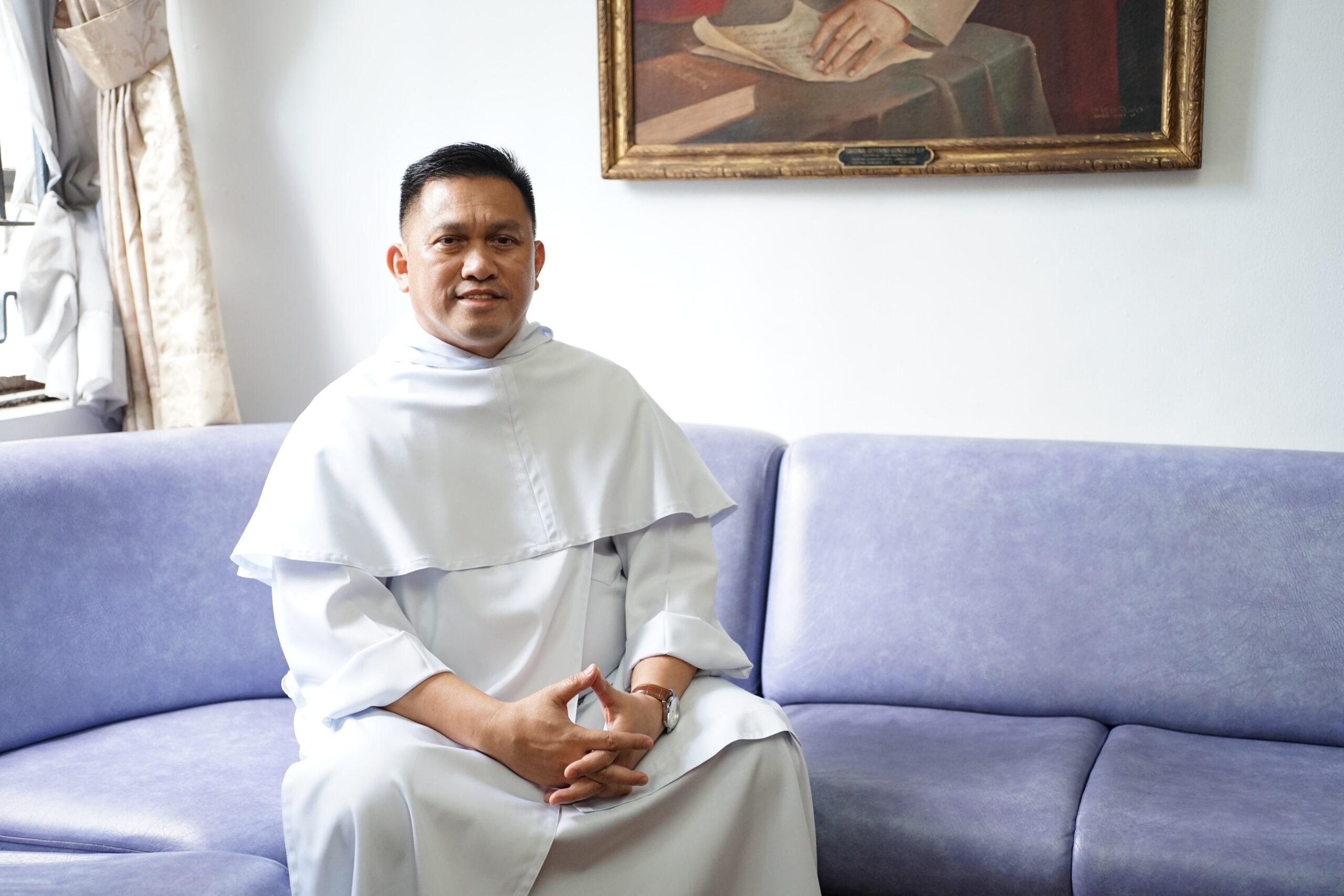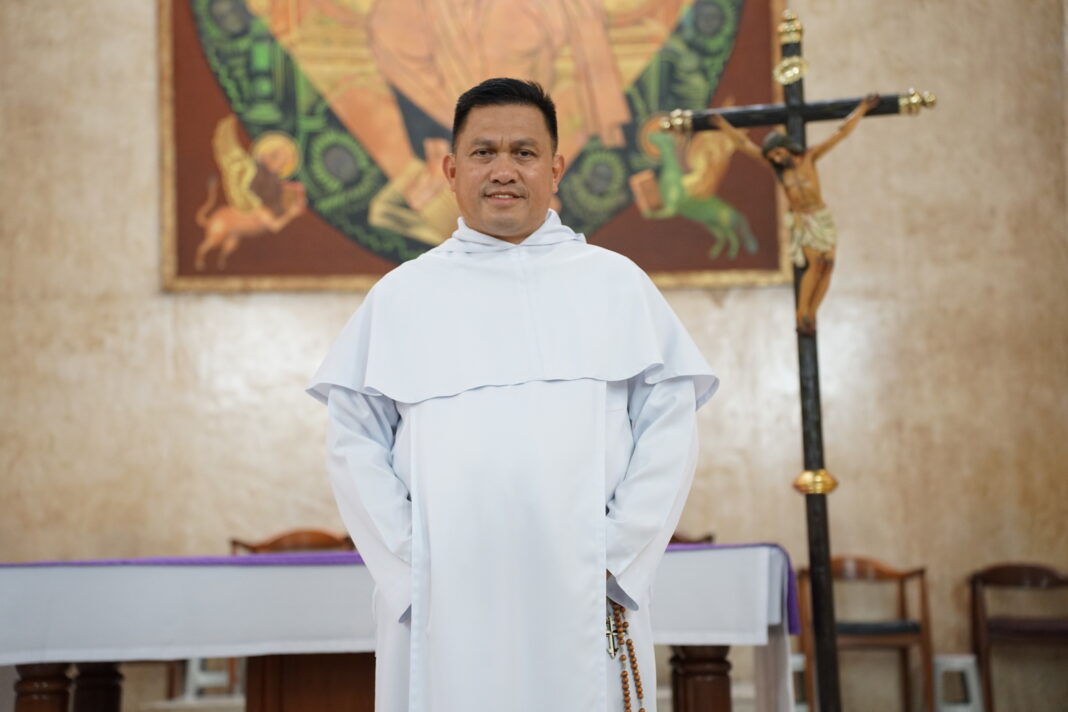A YOUNG Napoleon Sipalay Jr., enrolled in the medical technology program at UST, came across an article in a student journal asking a simple question, “What will you do after college?” For six minutes, he contemplated his future, which had become too clear by then.
In high school, Sipalay joked at an impromptu speech contest that he would become a priest because it is “a life of service.”
“Though it started [as] a joke, it dawned on me later that all of the things I attended in high school and college [were] all service-oriented: Boy Scouts, student government, school paper, the military training, and class officer,” he told the Varsitarian in an interview. “It seemed that everything for me was for service.”
But Sipalay wanted to help his family make ends meet. Besides, his mother wanted him to live in the outside world first.
“My mother was kind of not merely protective, but he wanted me to have an experience of the world before committing to a life of priesthood,” he said.
Sipalay eventually exchanged his books in chemistry and botany for the Bible, the latter he was fond of reading anyway, despite the fear that gripped him for entering a life “I’m not even aware of.”
“[God] did not force [me]; he gave me choices,” he said.
The introvert Sipalay would soon discover that he needed to go out and talk to people constantly in a world that has never been a home of angels.
“You enter a place of human beings with our weaknesses, and some of us may trample our dreams,” he said. “I realized [that] the experience I had with God outside [and] the experience I had with my family helped me persevere even with the objections of the others who are doubting my vocation, and even being almost sent out because of my mistakes.”
Sipalay’s name now has a place in history after Pope Francis appointed him bishop of the Diocese of Alaminos – covering parishes in the City of Alaminos and western Pangasinan, including the municipalities of Bugallon and Mangatarem, among others. He became the first Filipino Dominican to take the helm of a diocese since the late Jose Paala Salazar served the Territorial Prelature of Batanes from 1996 to 2002.
Only two other Dominicans had been named prelates: the late former UST rector Fr. Leonardo Legaspi, O.P., archbishop of the Diocese of Caceres in Camarines Sur from 1984 to 2012, and Msgr. Mario Baltazar, O.P., who oversaw the territories of Batanes and the Babuyan Islands from 1966 until his resignation in 1995.
On Monday, March 18, Sipalay, 53, will be consecrated bishop at the Minor Basilica of Our Lady of the Rosary of Manaoag, a prominent pilgrim site in the north administered by the Dominicans. Among Church figures leading the consecration are Archbishop Charles John Brown, apostolic nuncio to the Philippines; Manila Archbishop Jose Cardinal Advincula; and Lingayen-Dagupan Archbishop Socrates Villegas.
On Tuesday, March 19, the Central Seminary vice rector will officially be installed bishop at the Alaminos Cathedral, a nearly 250-year-old Baroque parish founded by the Augustinians.
It would take time for Sipalay to be acquainted with the job.
“I have to understand all these dynamics, and I hope we can journey together to make it happen, whatever vision they have started to build, and continue to flourish following the Spirit, who is really calling us to build as one Church,” he said.
A mission in South Asia
Sipalay has already navigated through unfamiliar territory before. In 2006, nine years into his priesthood, he flew to conflict areas in Sri Lanka to do missionary work – teaching theology for three years at the National Seminary of Our Lady of Sri Lanka in the city of Kandy.
It was a perilous time in the South Asian country, with the rebels Liberation Tigers of Tamil Eelam battling out with the Sinhalese, the largest ethnic group there.
“You have to work with other religious congregations, not only for Catholics, but we worked with other religious leaders,” he stressed, adding, “Because people there did not anymore find solutions to their political leaders, they look for solutions through the religious leaders.”
Sipalay and his fellow missionaries aided victims of the civil war, regardless of whether they were part of the Tamil or Sinhalese: “We realized no one won the war.”
The 25-year civil war eventually came to an end in 2009, with the Sri Lankan Army breaking the defense lines of the Tamil in the north. It was a personal and savoring victory for its president, Mahinda Rajapaksa, though the United Nations issued a grim assessment: more than 250,000 ethnic Tamils lived in overcrowded camps, and tens of thousands were used as civilian shields during the guerilla fight.
Only faith, Sipalay said, was the source of hope and strength for many: “Everyone lost a loved one, everyone suffered, and we realized that the only solution we have is to sit down and be in touch with the sacred.”
“When you see wells – mga balon – ‘di ba akala mo hiwa-hiwalay mga balon? But these wells, if you go underneath, is one river that is flowing. It was their experience with the sacred – the Muslims, the Buddhists, the Hindus, the Christians – they’re connected to one another. So I realized, yeah, those elements were very important as a journey in the mission.”
After the war, Sipalay was assigned secretary to the Committee for Religious Formation of the Conference of Major Religious Superiors of Sri Lanka.

Coming home
Sipalay returned to his home country in 2016 after being named the 12th prior provincial of the Dominican Province of the Philippines and, by virtue, vice chancellor of UST.
Two weeks later, he was elected chairman of the University’s board of trustees – one of four governing bodies of the institution.
After one term, he moved to the UST Central Seminary to serve as vice rector, in which he was tasked to be its official bursar or financial administrator and the immediate formator of philosophy students.
“Dominican life is not a monastic life only,” Sipalay said. “It has the monastic structures, but it has a very strong apostolic mission. It’s primarily apostolic in the sense that you’re meant to share with others the fruit of contemplation.”
Thirty-six years into the Dominican life – he entered the Order of Preachers in 1988 and was ordained priest in 1997 – Sipalay ventures into a new mission at a place he is clueless about.
“To live in a diocese, for me, is very new,” he said. “I will be the one to adjust, for one. And I will respect the way of doing things [and] the Church that they have.”
“I know there are things that are reserved for the bishop to decide, but for the bishop to decide, he has to understand the flock. I would like to journey with them.” With reports from Ralent M. Penilla














